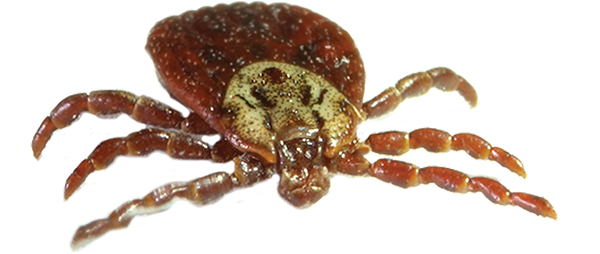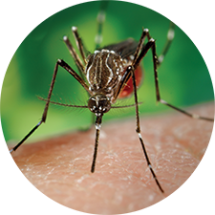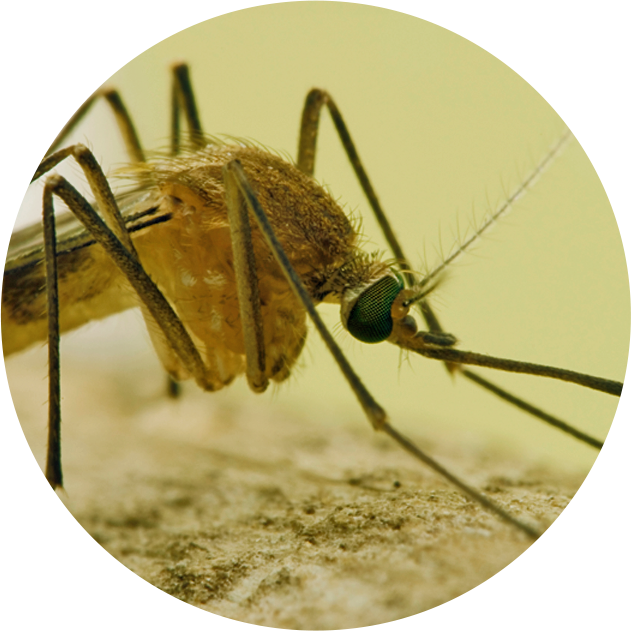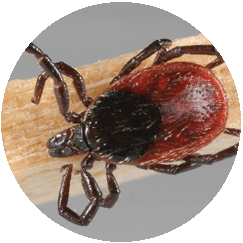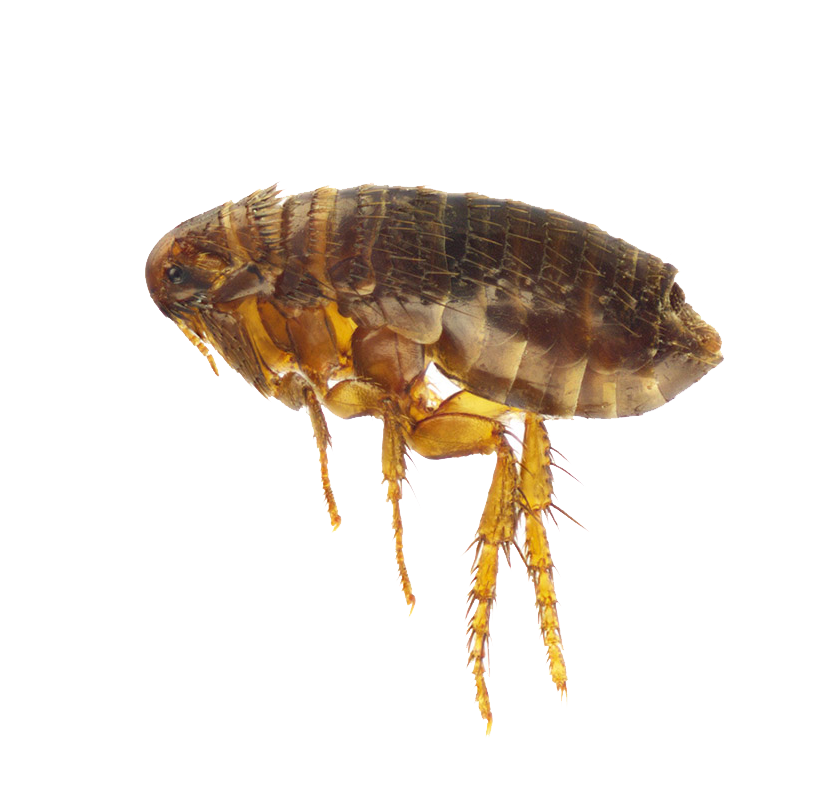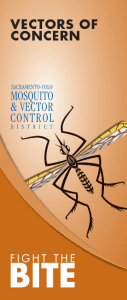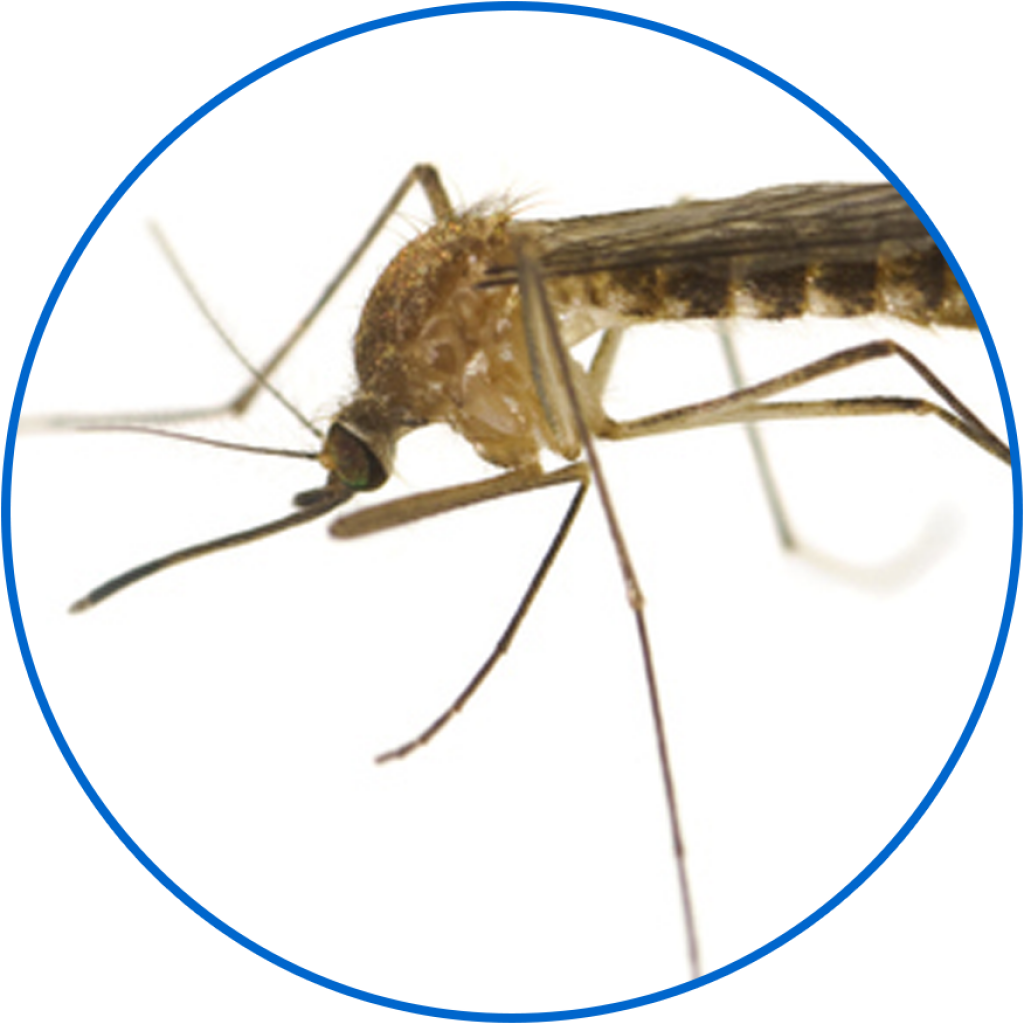WHAT IS A VECTOR?
Many people may not know what “Vector Control” is or why it is important. A vector is an insect or animal that transmits a disease to other animals or humans. In essence, a vector is a carrier of a disease. Examples of common vectors include mosquitoes, ticks, mites and fleas.
Part of our work is the surveillance, monitoring, and control of vectors that carry diseases such as West Nile virus and Lyme disease. Additionally, we work with other public agencies and institutions to educate the public on vectors, the diseases they carry, and prevention techniques.
VECTOR VOCABULARY
Adulticides – Products used to reduce adult mosquito populations, they may contain one or more active ingredients and are applied by hand-held sprayers, truck-mounted sprayers, or airplane. Adulticides can be used to immediately reduce the number of adult mosquitoes in an area.
Biological Control – An alternative method of controlling pests that utilized a pest’s natural enemies including predators, parasites, and disease-producing organisms.
BTI (Bacillus thuringiensis) – A naturally occurring bacterium found in soils that contains spores containing toxins that specifically target and only affect the larvae of mosquitoes, blackflies, and fungus gnats. BTI has no toxicity to people and is approved for use in organic farming operations.
Chemical Control – Chemical control is the use of specific chemical compounds (insecticides) that eliminate adult and immature mosquitoes. It is applied when other methods fail to maintain mosquito numbers below a tolerable or when emergency control measures are needed to rapidly disrupt or terminate the transmission of disease to humans.
CO2 Baited trap – CO2 is a large component of an exhaled breath and is an attractant for host-seeking female mosquitoes. These traps can be baited with either dry ice or compressed gas CO2.
Encephalitis – Inflammation of the brain, often caused by a virus, can cause mild flu-like symptoms, or no symptoms at at. Encephalitis can also lead more severe flu-like symptoms, seizures, or problems with senses or movement, and rarely, can be life-threatening.
Gravid – pregnant, carrying eggs or young.
Gravid Traps – a trap that utilizes foul water to attract female mosquitoes looking for a place to lay eggs. In our District, this traps mostly catches Culex pipiens.
Larvicides – Larvicides are products used to reduce the numbers immature mosquitoes. They can either be biological or chemical in origin, are applied directly to the water, and control mosquitoes by preventing larval mosquitoes from emerging as adults.
Malaria – is caused by parasites that attack red blood corpuscles, destroying them while undergoing asexual reproduction. It is transmitted primarily to humans by Anopheles mosquitoes and can be contracted by shared needles, blood transfusions or transplacental infections. Mosquitoes become infected while feeding on other humans that harbor the parasite.
Mosquito Pools/Samples – Mosquitoes are trapped and collected from the field. The collected females are then pooled together by species. Each sample contains a minimum of one to a maximum of 50 mosquitoes per sample. Each sample is tested for the presence of St. Louis Encephalitis, Western Equine Encephalomyelitis and West Nile viruses by TaqMan real-time polymerase chain reaction (PCR).
New Jersey Light Trap – Captures adult mosquitoes, tracks seasonal abundance and monitors control activities for mosquitoes.
Parasite – An organism that lives and feeds on or in another plant or animal (known as the host). The host is usually harmed by the parasite. Parasites are among the worst pests; but when parasites help people by attacking and controlling pests which could injure crops or animals, they become forms of biological control.
Physical Control – physically manipulating or altering mosquito habitats, thus reducing or eliminating mosquito production.
Proboscis – long mouthpart of an adult mosquito.
Sentinel Chicken flocks – The District utilizes sentinel chicken flocks to detect disease transmission of mosquito-transmitted arboviruses such as West Nile virus (WNV), Western Equine Encephalomyelitis (WEE) or St. Louis Encephalitis (SLE). Within a few days after being bitten by a mosquito infected with one of these viruses, the chickens develop specific antibodies to that virus. They do not become ill or die. Blood samples from the chickens are routinely taken by laboratory staff and tested for the presence of these antibodies.
Saint Louis encephalitis virus (SLEV) – is transmitted to humans by the bite of an infected mosquito. Most persons infected with SLEV have no apparent illness. Initial symptoms of those who become ill include fever, headache, nausea, vomiting, and tiredness. Severe neuroinvasive disease (often involving encephalitis, an inflammation of the brain) occurs more commonly in older adults. In rare cases, long-term disability or death can result. There is no specific treatment for SLEV infection; care is based on symptoms.
Ultra Low Volume (droplet size) – This highly concentrated solution may contain the active ingredient alone; it is applied without diluting. These solutions require special equipment to apply them at ultra low volumes. ULV applications are frequently made from aircraft or from groundbased equipment to control adult mosquitoes.
Tick – A bloodfeeding external parasite of mammals, birds, and reptiles. Some ticks can transmit diseases to humans and animals. The primary vector for Lyme disease in Sacramento and Yolo Counties is Ixodes pacificus, also known as the western black-legged tick. Ticks are usually found in grassy areas, in brush or in wooded areas. They wait on the tips of vegetation for a human or other animal host to pass by (this is called “questing”). As the host brushes against it, the tick makes contact, looks for a suitable location and begins the feeding process.
Vector – an animal or insect that is capable of transmitting a disease to humans or other animals, or is considered a public health nuisance.
West Nile virus – is a disease transmitted to humans, birds, horses and other animals by the bite of an infected mosquito. Mosquitoes get the disease from infected birds while taking blood and can later transmit it when they bite animals or humans.There are no vaccines to prevent or medications to treat WNV. Fortunately, most people infected with WNV do not have symptoms. About 1 in 5 people who are infected develop a fever, headache, fatigue, swollen lymph nodes and other symptoms. About 1 out of 150 infected people develop a serious, sometimes fatal, illness.
Western Equine Encephalitis – a viral illness that is transmitted to people and horses through the bite of an infected mosquito. The virus is an alphavirus and is closely related to Eastern Equine Encephalitis and Venezuelan Equine Encephalitis viruses.
Zika virus – is predominantly spread by the bite of an infected mosquito (Aedes aegypti or Aedes albopictus). Although there has been no record of mosquito-borne Zika transmission in California, infected travelers return to the state each year. When mosquitoes capable of transmitting Zika are present there is always the possibility of local transmission.


